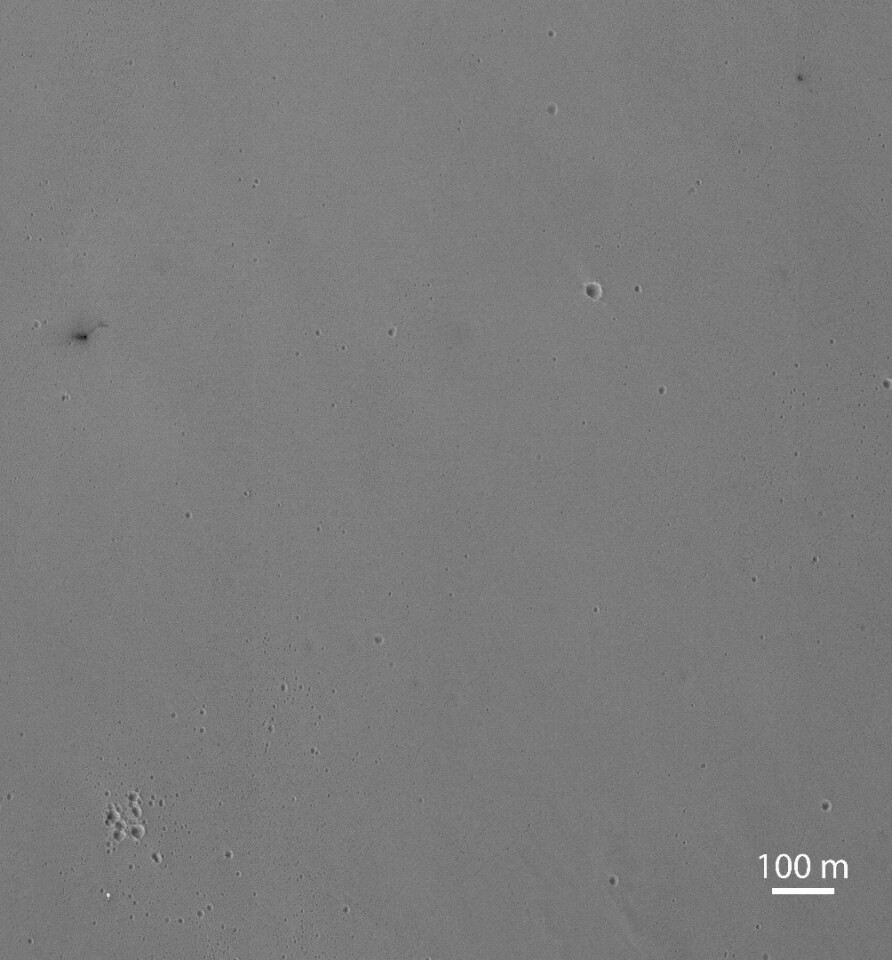Though exactly what happened to ESA's Schiaparelli lander when it crashed on the surface of Mars on October 19 remains uncertain, new high-resolution images from NASA's Mars Reconnaissance Orbiter (MRO) taken on October 25 are helping investigators to zero in on the cause of the accident. Among the many possibilities being considered is that the unmanned spacecraft shut down its landing engines early because it thought it was already on the ground.
The images returned from the MRO give more support to the conclusion that the Schiaparelli module exploded on impact. The orbiter's HiRISE camera shows that the impact site is a dark fuzzy patch of roughly 15 x 40 m (49 x 131 ft) with a central dark spot 2.4 m (7.9 ft) wide in a crater about 50 cm (20 in) deep.
This indicates that the 300 kg (661 lb) probe hit the ground at around 300 km/h (186 mph). However, instead of being round, the patch is asymmetrical and a long, dark arc can be seen to the upper right. This suggests that one of the hydrazine fuel tanks exploded on impact.

In addition, the MRO confirmed the location of the parachute and rear heat shield 1.4 km south of the lander. The forward heat shield was also found and ESA says a few white dots are visible on the images, but these may be no more than "noise."
As to why Schiaparelli crashed, there's no official word from ESA, but a report in Nature includes some speculation by space agency officials.
According to Jorge Vago, project scientist for ExoMars, Schiaparelli's six-minute maneuver went off without a hitch in the beginning with the hypersonic atmospheric entry, deceleration, and parachute deployment going as planned. However, 4 minutes and 41 seconds into the descent the module's heat shield and parachute jettisoned ahead of schedule.

Then, the rocket engines that were supposed to slow down the craft for landing fired. They were scheduled to burn for 30 seconds, but shut off after only 3 or 4 seconds. Meanwhile, telemetry indicates the lander had switched on the instruments it would use on the surface of the Red Planet. Vago believes these incidents indicate Schiaparelli's computer thought it had already landed. The result was that the craft fell from an altitude of 2,000 to 4,000 m (6,500 to 13,000 ft) before it hit the ground.
"My guess is that at that point we were still too high" says Vago. "And the most likely scenario is that, from then, we just dropped to the surface."
Andrea Accomazzo, ESA's head of solar and planetary missions, says that the probable cause of this confusion was a software problem, or the computer had difficulty handling input from the module's sensors. But she cautions a full analysis is required before any firm conclusions can be drawn.

ESA says the MRO will continue to take pictures of the crash site over the next few weeks, These are scheduled for different times of day to provide analysts with different light angles and shadows to help them calculate the height of features. Meanwhile, telemetry transmitted by Schiaparelli will be subjected to intense scrutiny to uncover additional clues.
A preliminary report is expected to be released in mid-November.
Source: ESA









